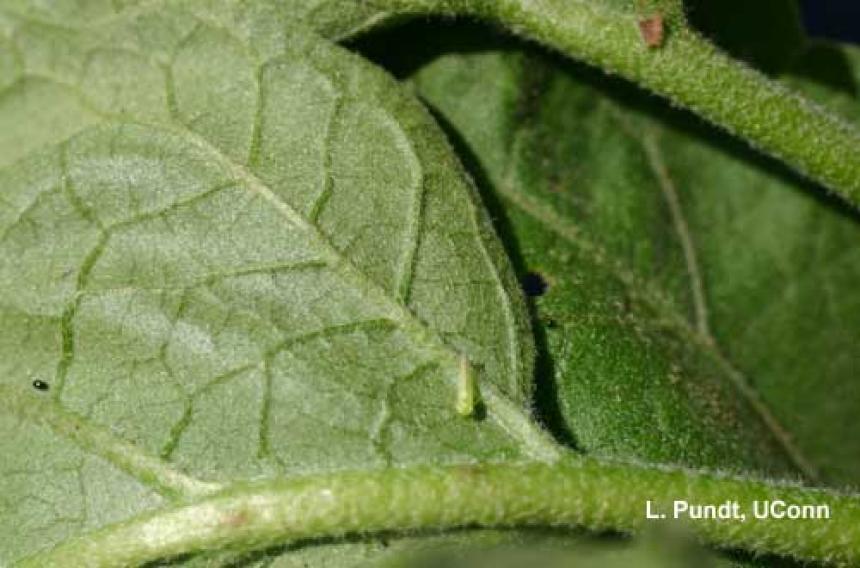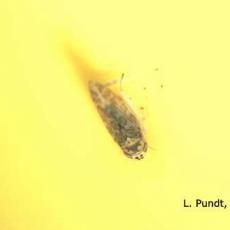Potato leafhopper ( Empoasca fabae ) adults are approximately 1/8 inch long, and light green with 6 white spots just behind their head. This leafhopper does not overwinter in New England . It migrates into New England in late April or early May from the south. There may be from 3 to 4 generations per year. Look on the underside of leaves along the leaf vein for the young nymphs on Alcea , Astilbe and Dahlia. The potato leafhopper injects a toxin as it feeds so leaves may develop a v-shaped brown, edge burn at the tip known as "hopperburn". This injury may be confused with leaf scorch especially on drought-sensitiveAstilbe. Plants may also be stunted with distorted new growth.
Management:
1. Systemic insecticides may be applied to prevent feeding damage when leafhoppers first appear. See list of labeled insecticides in the New England Recommendation Guide.
2. Several predators, parasites and fungal pathogens attack the potato leafhopper, but effective biological control is seldom obtained.
More information about Potato Leafhopper: UMass Vegetable Newsletter article 2006 (PDF)


